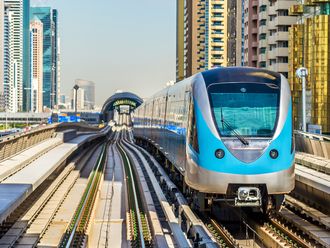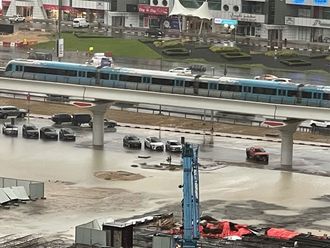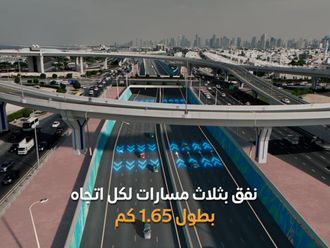Abu Dhabi: The Umm Al Quwain gateway project completed at a cost of nearly Dh200 million will be opened soon, Dr Abdullah Bin Mohammad Bel Haif Al Nuaimi, Minister of Infrastructure Development and Chairman of the Federal Transport Authority — Land and Maritime, told Gulf News in an interview.
The gateway covers Al Etihad Street, for vehicles coming from Al Hamerya area to Umm Al Quwain, and from the overpass in Umm Al Quwain leading to Shaikh Mohammad Bin Zayed Street and Falaj Al Mualla city in both directions. It consists of six bridges, including two main bridges, each comprising of two lanes in each direction, in addition to two road tunnels, connecting Umm Al Quwain with external roads number 311 and 611.
“The development of the gateway also includes the construction of overpasses and bypasses to connect the emirate with Al Etihad Street and Umm Al Quwain Street – Falaj Al Mualla, which contributes to smooth traffic flow to and from Umm Al Quwain, Shaikh Mohammad Bin Zayed Street, Falaj Al Mualla area, Al Etihad Street leading to Ras Al Khaimah and Sharjah,” Al Nuami said.
The gateway will also include the development of pedestrian crossings, aimed at safe crossing on both sides of the road, he added, pointing out that based on the studies conducted by the ministry, Umm Al Quwain gateway is expected to witness an increased traffic rate of about 5.3 per cent per year.
Al Nuaimi added that Al Badea intersection project consists of three phases and is expected to be completed by the end of 2017, with a total cost estimated at Dh200 million.
The first phase of the intersection includes constructing a bridge for traffic flow from Dubai heading directly to Sharjah towards the university campus and will include three lanes in one direction only.
The second phase will include an exit comprising of three lanes for motorists coming from Sharjah to Dubai.
The third phase of the project will include the expansion of the existing bridge over the intersection of Emirates Road and Meleha Road and will include three to seven lanes.
The lanes will be divided into five main lanes separated with road blocks from exits, in addition to two outbound lanes.












